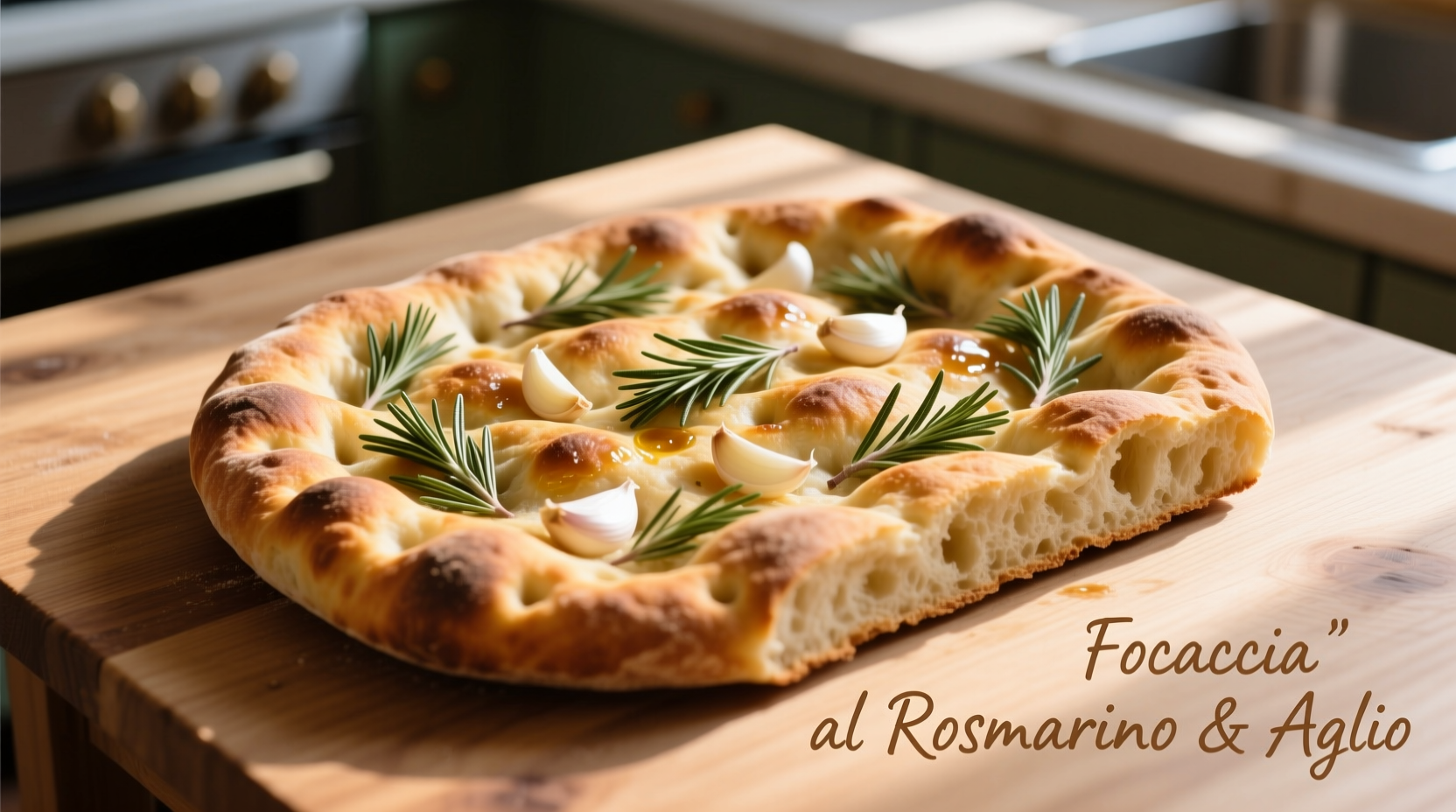Nothing compares to the aroma of freshly baked rosemary garlic focaccia straight from the oven. This iconic Italian flatbread, originating in Liguria, combines simple ingredients with precise technique to create a masterpiece of texture and flavor. When made correctly, authentic focaccia features an open crumb structure, crisp olive oil-infused crust, and the perfect balance of aromatic rosemary and subtle garlic notes.
The Essential Ingredients for Authentic Flavor
Quality ingredients form the foundation of exceptional focaccia. For the best rosemary garlic focaccia, you need:
- Bread flour (100%) - Higher protein content (12-14%) creates superior gluten structure
- Fresh rosemary (2-3 sprigs) - Provides brighter, more complex flavor than dried
- Garlic (4-5 cloves) - Thinly sliced for even distribution without burning
- Extra virgin olive oil (⅓ cup) - High quality Ligurian or Tuscan oil preferred
- Sea salt flakes (2%) - Enhances flavor without making dough too tight
Professional bakers emphasize that ingredient quality directly impacts final results. As noted by the Italian Pastry Academy, "the olive oil used in focaccia isn't just fat—it's a flavor carrier that defines the bread's character."

Focaccia Evolution Timeline: From Ancient Flatbread to Modern Classic
Focaccia's history spans millennia, evolving from simple flatbreads to the herb-infused specialty we know today:
| Era | Development | Key Characteristics |
|---|---|---|
| Ancient Roman | "Panis focacius" baked in hearth ashes | Simple flatbread with olive oil and salt |
| Medieval Period | Regional variations emerge across Italy | Herbs added based on local availability |
| 19th Century | Ligurian version gains prominence | Rosemary and garlic become signature flavors |
| Modern Era | Global popularity with authentic techniques | Emphasis on slow fermentation and quality ingredients |
Step-by-Step Preparation: The Professional Method
Creating exceptional rosemary garlic focaccia requires attention to detail at each stage:
Dough Mixing and Autolyse (20 minutes)
Combine 500g bread flour and 375g water (75% hydration). Let rest for 20 minutes before adding 7g yeast and 10g salt. This autolyse period develops gluten structure without overworking the dough.
Stretch and Folds (Over 2 hours)
Perform four sets of stretch and folds at 30-minute intervals. This gentle technique builds strength without degassing the dough. Properly developed dough should be smooth, elastic, and pass the windowpane test.
Slow Fermentation (18-24 hours)
Refrigerate the dough for 18-24 hours. This extended cold fermentation develops complex flavors and creates the characteristic open crumb structure. The dough should double in size and show visible bubbles.
Shaping and Second Rise (2-3 hours)
Transfer dough to an oiled baking pan, dimpling gently with fingertips. Add thinly sliced garlic and rosemary sprigs, pressing them into the dough. Allow to rise until nearly doubled.
Baking (22-25 minutes at 425°F/220°C)
Bake until golden brown with crisp edges. The internal temperature should reach 205-210°F (96-99°C). Immediately brush with additional olive oil and sprinkle with flaky sea salt.
Context Boundaries: When This Bread Works Best
Understanding the appropriate contexts for rosemary garlic focaccia ensures optimal enjoyment:
- Ideal for: Sandwich bases, dipping with quality olive oil, accompaniment to soups and salads, appetizer with cured meats
- Less suitable for: Formal dinner rolls, sweet applications, gluten-free diets, quick weeknight meals (requires planning)
- Best served: Within 6 hours of baking, at room temperature, never refrigerated
- Storage limitations: Loses optimal texture after 24 hours; freeze slices for longer storage
Common Mistakes and How to Avoid Them
Even experienced bakers encounter challenges with focaccia. Here's how to troubleshoot the most frequent issues:
| Problem | Authentic Approach | Common Mistake |
|---|---|---|
| Dense texture | 75-80% hydration with proper fermentation | Too little water or insufficient rise time |
| Burnt garlic | Thinly sliced garlic added before baking | Garlic powder or minced garlic that burns |
| Flat appearance | Gentle dimpling without deflating dough | Over-handling or insufficient rise |
| Bland flavor | High quality olive oil and fresh herbs | Low quality oil or dried herbs |
Serving and Storage Recommendations
For optimal enjoyment of your rosemary garlic focaccia:
- Serve at room temperature within 6 hours of baking
- Cut with a serrated knife to preserve texture
- Pair with high-quality extra virgin olive oil for dipping
- Store leftovers in a paper bag (not plastic) at room temperature
- Revive stale focaccia by sprinkling with water and reheating at 350°F (175°C) for 5-7 minutes
According to culinary research from the University of Genoa, "the volatile compounds in fresh rosemary begin to degrade within 8 hours of baking, making same-day consumption ideal for maximum flavor impact."
Variations Worth Trying
While traditional rosemary garlic focaccia remains a classic, these authentic variations honor regional Italian traditions:
- Focaccia di Recco - Filled with stracchino cheese (Ligurian specialty)
- Focaccia Barese - Topped with cherry tomatoes and olives (Puglian style)
- Focaccia with Cipollina - Featuring small onions (Tuscan variation)
- Focaccia Dolce - Sweet version with grapes or figs (seasonal specialty)
Final Thoughts for Perfect Results
Mastering rosemary garlic focaccia requires patience and attention to detail. Remember that authentic Italian baking values quality over speed—allowing proper fermentation time transforms simple ingredients into something extraordinary. The perfect focaccia should have irregular air pockets, a crisp golden crust, and the unmistakable aroma of fresh rosemary and garlic balanced by high-quality olive oil.











 浙公网安备
33010002000092号
浙公网安备
33010002000092号 浙B2-20120091-4
浙B2-20120091-4